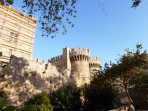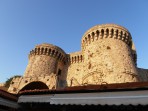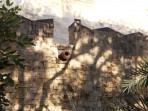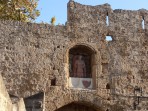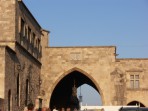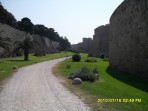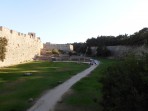Palace of the Grand Masters - Rhodes Town
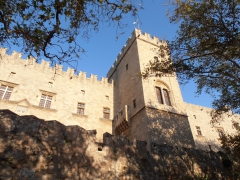
The architectural jewel of the Greek island of Rhodes is undoubtedly the Palace of the Grand Masters, a stunning fortress with high battlements and long walls. The palace dates back to the 14th century and stands in the Old Town area of the capital city of Rhodes.

History of the Palace of the Grand Masters
After the Knights of the Order of St. John occupied the island of Rhodes in 1309, they began the construction of the palace, which had to serve primarily as the residence of the highest knight of their order, but also as a fortress and dwelling for the Johanite knights themselves. The palace was also the venue for trade and diplomatic meetings as well as religious activities.
For the construction of the palace, the Knights of St. John chose the highest point in the centre of the capital city of Rhodes and surrounded the entire palace area with 4 kilometre long massive walls. Throughout its history, the Palace of the Grand Masters has witnessed several earthquakes and has also experienced a siege by the Turks, who used it as a prison (the Turks took control of the island of Rhodes in 1522). All of this has left its mark on the fortress, but not devastatingly. However, the year 1856 was fatal when a lightning strike struck the gunpowder warehouse and caused an explosion, leaving the palace in ruins.
The restoration of the palace was the work of the Italians, who partly reconstructed and partly rebuilt the site between 1937 and 1940. During the period of Italian rule, the building was to serve as the residence for the governor of the colony and for the stays of the leader Mussolini and King Victor Emmanuel III. In reconstructing the exterior of the palace, the Italian architects based their design on the historical model, but the interior space was already completely subordinated to the functions it was intended to serve. In its present form, the palace is therefore the work of the Italians.
According to a recent study, the foundations of the ancient temple of the sun god Helios were located on the very spot where the Palace of the Grand Masters stands now and the legendary Colossus of Rhodes probably stood on the same spot in ancient times.
Since 1988, the palace has been a UNESCO World Heritage Site.
Appearance of the Palace of the Grandmasters
The Palace of the Grand Masters is a landmark of the Old Town of Rhodes and towers over the harbour of Mandraki. At first glance, the palace of pale yellow stone looks impregnable, rising to a height of 15 metres, where it is topped with a battlement. The palace is built in the Gothic style and throughout the complex, surrounded by double walls, there are several entrance gates, moats and cannons.
The entrance to the palace is located at the end of Knights Street and is guarded by two large stone towers. The palace is entered by a grand staircase and the floors of the palace and the large courtyard are decorated with magnificent coloured mosaics. Inside the palace is the beautiful Hall of Columns, which is dominated by two rows of columns topped with arches and a floor decorated with 5th-century Christian mosaics. To the most famous rooms of the palace also belong the hall with the sculpture of Laocoon and Sons or the hall with the mosaic depicting the mythical Medusa.
Today, the Palace of the Grand Masters houses a museum with two exhibitions, one tracing ancient life in the city of Rhodes and the other containing exhibits of life in medieval Rhodes (during the reign of the Johannites). To decorate the palace, the Italians used a number of works of art brought from other islands of the Dodecanese archipelago. Inside the building you can admire a number of beautiful wall mosaics, ancient statues, furniture and antiques. In the courtyard of the palace, which covers a considerable area of 2,000 square metres, eight late Hellenistic sculptures from the ancient theatre of Kos (dating from the 2nd and 1st centuries BC) stand in niches in the walls.
More tourist tips
The Palace of the Grand Masters is open to the public. The admission fee of €6 per tour of the palace includes a visit to the museum (data from 2020). However, there is a ban on photography in the museum's ancient exhibition.
For more information about Capital city of Rhodes, including travel tips, see Excursions - Capital city of Rhodes.
More touristic destinations of Rhodes
Most favourite sights of Rhodes: Acropolis of Lindos, Acropolis of Rhodes, Monolithos Castle, Tsambika Monastery, Kolossos of Rhodes, Palace of the Grand Masters - Rhodes Town
Resorts, beaches, sights or trips - clearly listed on the map of Rhodes.
Did you visit this place and do you have some additional informations, interessting observation or photos?

